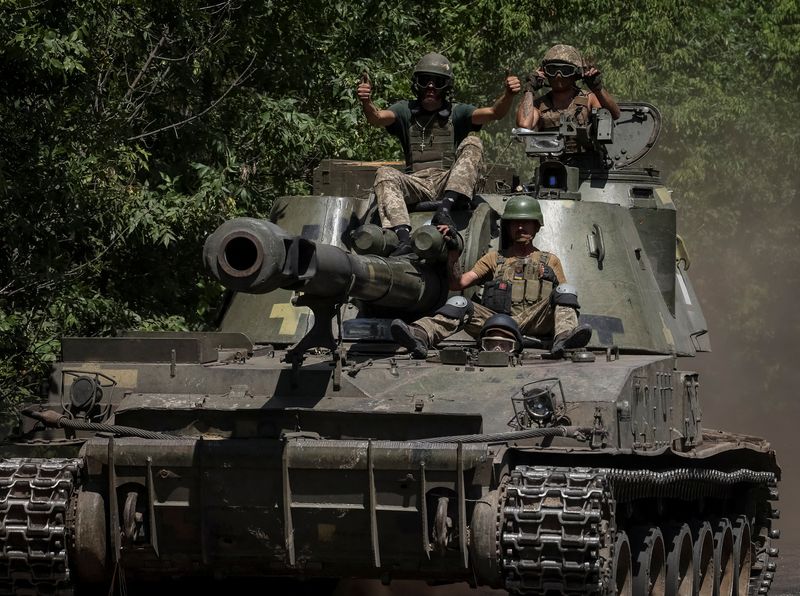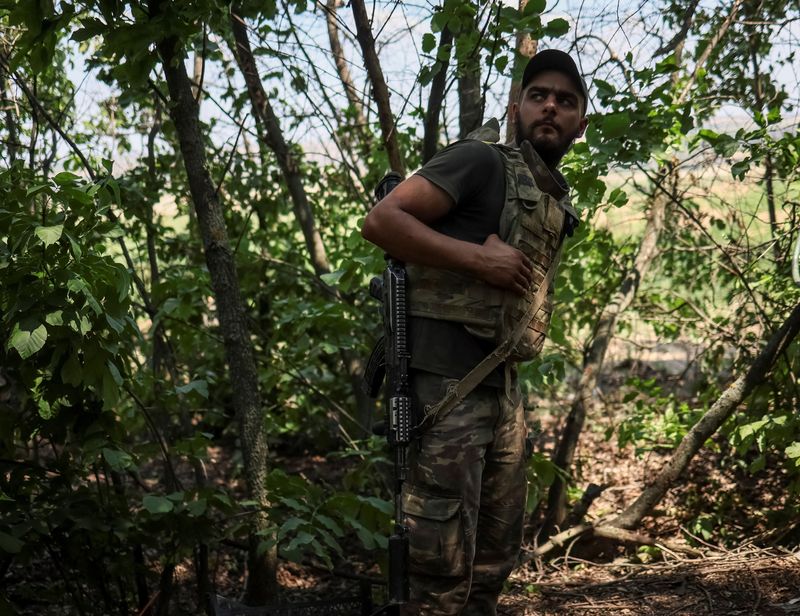By Simon Lewis
ON THE ROAD TO SIVERSK – As artillery fire booms nearby, Dmytro looks up and listens.
“That’s ours,” notes the 28-year-old, deputy commander of his infantry unit, perched on the edge of a deep earth bunker covered with logs and sandbags near the road to the frontline town of Siversk in eastern Ukraine.
“This sound calms us down,” he says. “Right now it’s more of our artillery than theirs, so it’s good. But there might be incoming soon.”
Light machine guns are at the ready atop an embankment, as the unit, which recently pulled back from the now-occupied city of Lysychansk, prepares to defend a new frontline in the fight for the Donbas.
Russian President Vladimir Putin has made capturing the industrialised region on behalf of separatist proxies a main war aim after an abortive assault on Kyiv beginning on Feb. 24.
The troops say a nearby artillery piece, firing from a field but hidden from view, is a U.S.-donated M777 Howitzer. Soviet-era rocket systems are also used nearby.
American instructors in other European countries have been training groups of Ukrainian artillerymen since April on the Howitzers. It is hoped these and other foreign weapons will help Ukraine turn the tide and push back Russia’s advance, but troops doubt the current commitments of long-range weapons and ammunition will be enough.
“We can hold them, but we can’t push them back with what we have now,” Dymtro said.
Russian forces have not made significant progress in recent days, and Reuters saw Ukrainian tanks with men riding atop them moving to the front near Siversk, alongside trucks carrying logs to build new defensive positions.
The two sides exchanged artillery fire around the city of Bakhmut and along the road from that city to Siversk, often igniting large fires in unharvested wheat fields.
“Russia is likely concentrating equipment on the front line in the direction of Siversk,” Britain’s Ministry of Defence said on Friday. “It’s forces are likely pausing to replenish before undertaking new offensive operations” which could focus on Siversk, the ministry said.
Beyond Siversk, the next targets for Russian forces are likely the symbolically important cities of Sloviansk and Kramatorsk to the west, where Russian-backed proxy forces first launched a previous campaign to take over the Donbas in 2014.
Russia sent troops into Ukraine in what it called a “special operation” to demilitarise its neighbour. Ukraine and Western nations have dismissed this as a baseless pretext for invasion.
Voron, a commander of a Ukrainian artillery unit, spoke to Reuters while hiding from view and identified himself by a nom de guerre. He said as well as insufficient ammunition to match the Russians, Ukraine’s Western supporters were often giving Ukraine shorter-range ammunition than the high-tech weapons are capable of firing.
“Some of our foreign friends are speaking more than actually doing,” Voron, 23, said of Western support for Ukraine.
“For people in the rest of Europe, this is like a TV show, but for us, it’s real,” he said. “Yes, we are losing some of our guys, but this is a war.”
(Reporting by Simon Lewis; Editing by Nick Macfie)


